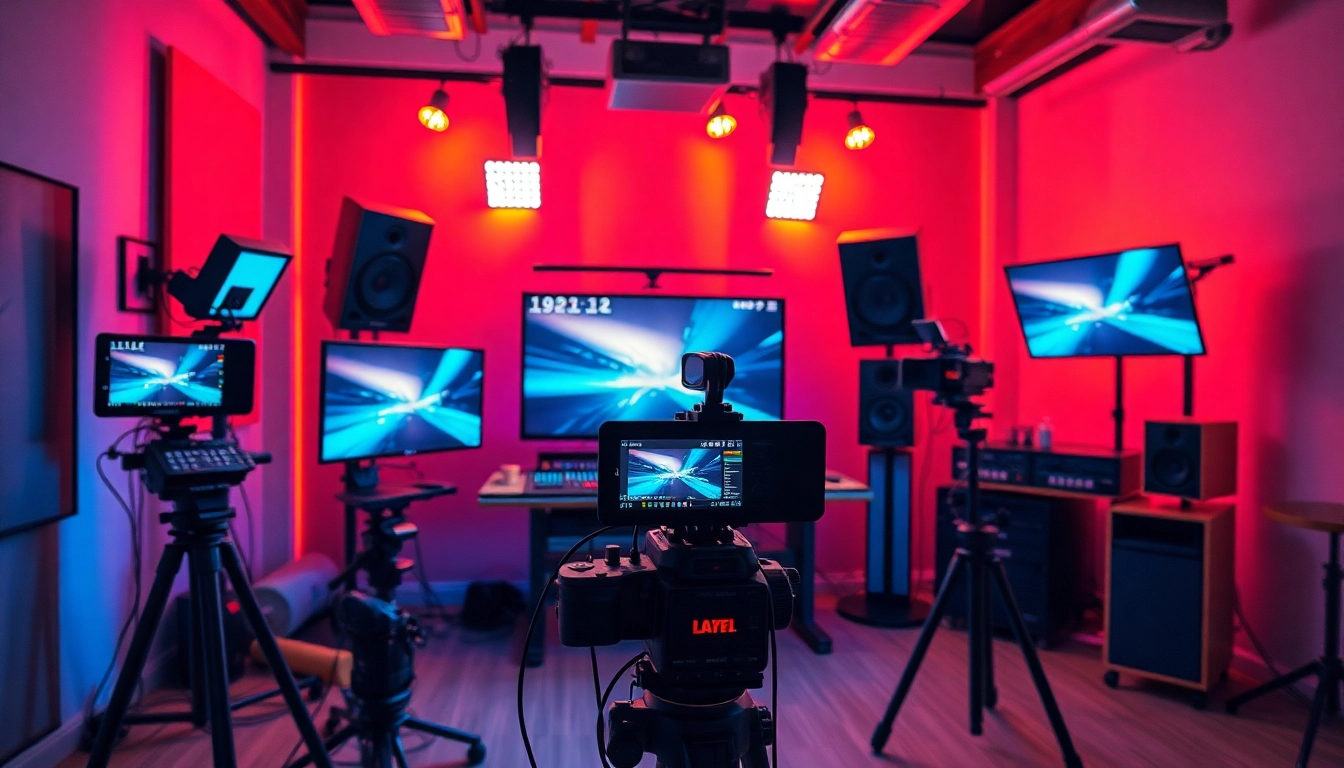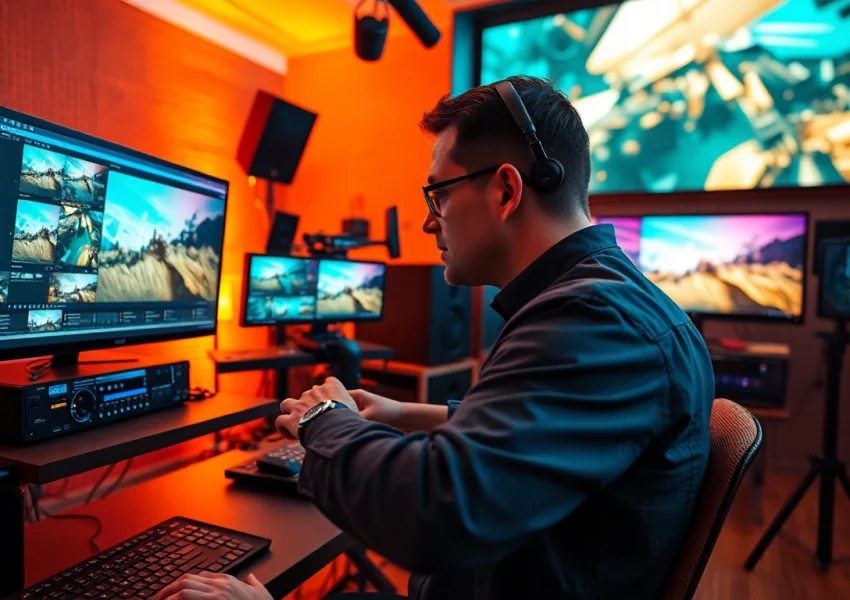Understanding the Importance of Video in Content Creation
In an age where visual content reigns supreme, understanding video is no longer optional for marketers, creators, and businesses. Video content has become indispensable to effective communication strategies, serving as a powerful medium that enhances storytelling, engagement, and brand visibility. This section delves deep into the significance of video in modern content creation, illustrating its multifaceted role across industries and platforms.
The Role of Video in Modern Marketing
Video content has transformed marketing strategies in recent years, offering dynamic, engaging platforms to convey brand messages. It is no surprise that marketers report higher engagement rates with video than with static content. Statistics reveal that consumers are 64% more likely to purchase a product after watching a video about it. This can be attributed to video’s ability to convey complex information quickly and enhance emotional connection, thereby improving brand loyalty.
Additionally, platforms like YouTube, Instagram, and TikTok have drastically shifted audience behavior, driving increased consumption of video content. With billions of views and an ever-growing user base, these platforms serve as significant avenues for marketers to reach potential customers. A well-produced video can go viral, exponentially boosting brand awareness and customer base.
Benefits of Video for Engagement and Retention
One of the primary benefits of utilizing video in content strategies is its unparalleled capacity for audience engagement. Video encourages viewer interaction, leading to more comments, shares, and likes compared to other content forms. According to various studies, social media posts with video content hold 48% more views compared to those without. This not only increases traffic but also enhances the likelihood of retaining viewers, as engaging videos can captivate audiences for extended periods.
Moreover, video aids in information retention. Research indicates that people remember 95% of a message when they watch it in a video compared to 10% when reading it in text. This is crucial for businesses aiming to educate consumers or stand out in a competitive market.
Common Challenges in Video Production
Despite its numerous advantages, video production is not without challenges. One significant obstacle is the resource requirement, as creating high-quality videos often requires substantial time, financial investment, and technical expertise. Many organizations struggle with scripting, storyboarding, and executing the video production process, which can lead to overlooked details or poor-quality output.
Additionally, adapting content for various platforms poses another challenge. Each social media outlet has its distinct audience and content norms—what works on Instagram may not resonate on LinkedIn. Ensuring that video content is tailored effectively can be difficult for creators, requiring an understanding of market behaviors and analytics.
Essential Tools and Software for Video Production
In order to navigate the complexities of video production effectively, creators must be equipped with the right tools and technology. Here, we will overview essential software for editing and production, necessary hardware, and tips for creating a seamless workflow.
Popular Video Editing Software Overview
Choosing the right video editing software is crucial for producing high-quality content. Popular options include:
- Adobe Premiere Pro: A professional-grade video editing platform used extensively in the film and television industries. Its extensive features and versatility make it a top choice for serious video creators.
- Final Cut Pro: Known for its robust capabilities and seamless integration with Apple devices, Final Cut Pro is a popular choice for creatives in the Apple ecosystem.
- Canva Video Editor: A more accessible and user-friendly option, Canva offers a drag-and-drop interface and is excellent for quick edits and social media content.
- Filmora: This software combines simplicity with advanced features, catering to users ranging from novices to professionals.
Hardware Essentials for Video Creators
Having adequate hardware is just as vital as software when it comes to video production. Key hardware essentials include:
- Camera: A high-resolution camera is essential. DSLRs and mirrorless cameras, or even smartphones with advanced camera settings, are great choices.
- Microphone: Quality audio often makes or breaks a video. Investing in good audio equipment, such as lavalier or shotgun microphones, is crucial.
- Lighting: Good lighting can enhance video quality dramatically. Softbox lights or ring lights are popular options among creators.
- Tripod: Stabilization equipment, like tripods or gimbals, is necessary to keep footage steady and polished.
Integrating Tools for Seamless Workflow
To foster a productive video production environment, it’s essential to integrate tools that streamline workflow. Consider using cloud-based storage solutions to share files easily among team members, ensuring that everyone has access to the latest video assets. Collaboration platforms like Trello or Asana can assist in project management, helping to keep timelines on track. Furthermore, utilizing plugins for video editing software can enhance functionality and save time on repetitive tasks.
Best Practices for Producing Impactful Videos
Creating compelling videos isn’t merely about having the right tools; it involves mastering best practices in video production. This section outlines essential techniques for scriptwriting, visual and audio element selection, and editing tips.
Scriptwriting and Storyboarding Techniques
Before filming, a well-thought-out script and storyboard are fundamental to ensuring the final product aligns with the original vision. The script should be clear and concise, typically following a three-act structure: introduction, body, and conclusion. This structure helps engage the audience right from the start and leads them toward a satisfying conclusion.
Storyboarding takes this a step further by visualizing scenes, which aids in understanding how the narrative flows. Tools like Storyboard That can be valuable for creators looking to map out their ideas visually. Incorporating feedback from peers during this phase can also refine the final script, enhancing content quality.
Choosing the Right Visual and Audio Elements
Visual and auditory elements play crucial roles in video storytelling. Choosing appropriate imagery ensures that the video enhances, rather than detracts from, the message. Consider color schemes, typography, and overall aesthetics that resonate with your brand identity.
When it comes to audio, background music and sound effects can significantly elevate the emotional tone of the video. Always ensure that audio levels are balanced, and consider using royalty-free music to avoid copyright issues. Tools like Epidemic Sound or Musicbed offer vast libraries for creators looking to enhance their audio backdrop.
Editing Tips to Enhance Your Video’s Quality
The editing phase can make a substantial difference in the quality of the final video. Here are some tips to keep in mind:
- Cutting Unnecessary Footage: Aim for brevity. Keep only the footage that serves the purpose of the video—this will hold viewer attention.
- Color Correction: Enhancing video colors through color grading can dramatically affect the visual appeal. Color correction tools are available across most editing software.
- Adding Effects Wisely: While effects can enhance production quality, overusing them can distract viewers. Stick to elements that serve the narrative.
- Subtitles and Captions: Including these can make your video accessible to broader audiences, including those who are deaf or hard of hearing.
Optimizing Videos for Different Platforms
Every platform comes with its specific audience and standards; thus, optimizing video content for each platform is essential. Here’s how to approach video optimization strategically.
Understanding Platform-Specific Requirements
Whether it’s format, length, or content style, understanding the requirements of various platforms helps tailor your approach effectively. For example, Instagram favors vertical videos, while YouTube prefers landscape. Moreover, video lengths should be platform-specific; shorter, snappier videos work better on TikTok, while detailed content can thrive on YouTube.
Strategic SEO for Video Content
Optimizing video content for search engines involves more than merely adding keywords to video descriptions. Incorporating keywords, tags, and creating engaging titles help elevate video visibility. Additionally, leveraging closed captions and transcripts can improve SEO rankings, as they provide textual content for search engines to crawl.
Utilizing Thumbnails and Titles for Visibility
Thumbnails and titles are often the first interaction users have with your videos. Creating eye-catching thumbnails that convey the video’s essence while being consistent with branding is essential. A/B testing different thumbnails can also determine which visuals drive higher engagement. Similarly, titles should be compelling and descriptive, inviting viewers to click while containing relevant keywords for better searchability.
Measuring Success and Impact of Your Videos
The effectiveness of video content can only be gauged through established metrics and KPIs. This final section covers ways to measure video success, analyze viewer feedback, and continuously improve video production processes.
Key Performance Indicators for Video Content
Establishing KPIs helps in measuring the effectiveness of video content. Common KPIs include:
- View Count: The total number of times a video is viewed, indicating its reach.
- Watch Time: The total amount of time viewers spend watching the video—higher watch time indicates better engagement.
- Click-Through Rate: Measures how many viewers click on your video after seeing the thumbnail or title, providing insight into the effectiveness of your thumbnails and titles.
- Engagement Rate: Metrics such as likes, comments, and shares provide feedback on viewer interaction with the video.
Analyzing Viewer Engagement and Feedback
Engaging with viewer feedback is crucial for understanding content efficacy. Platforms like YouTube provide analytics that can offer insights into demographic data, retention rates, and viewer preferences. Monitoring these metrics allows creators to adjust their strategies based on viewer reactions and trends.
Continuous Improvement Strategies for Video Production
Adopting a mindset of continuous improvement is vital for video production success. Conducting regular reviews of your content through audience feedback and analytics will uncover strengths and weaknesses in your strategies. Experimenting with different styles, formats, and lengths can also provide insights into what resonates most with your audience.
In conclusion, mastering the craft of video production is a journey that combines creativity, technical skill, and strategic thinking. By following best practices, utilizing essential tools, and continuously measuring success, creators can craft impactful, engaging videos that stand out in a crowded digital landscape.





